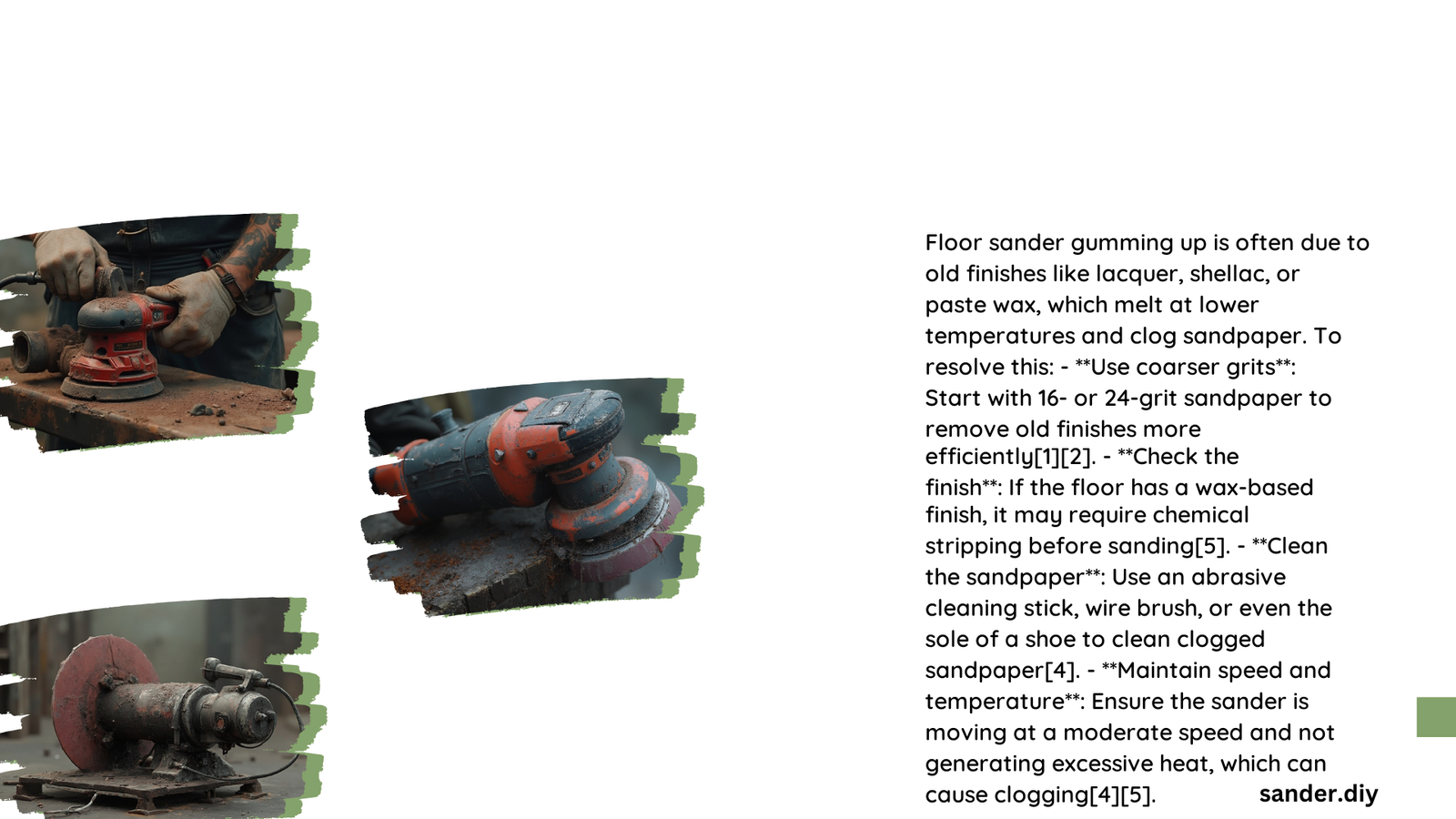Floor sander gumming up is a frustrating challenge that can derail your hardwood floor restoration project. When sandpaper becomes clogged with old finish, debris, and melted materials, it reduces sanding efficiency, increases project time, and potentially damages your floor surface. Understanding the root causes and implementing strategic solutions can help woodworkers and DIY enthusiasts overcome this common sanding obstacle.
What Causes Floor Sander to Gum Up?
Why Do Different Finishes Affect Sanding Performance?
Different floor finishes react uniquely during sanding, creating varying levels of gumming:
| Finish Type | Gumming Potential | Recommended Approach |
|---|---|---|
| Lacquer | High | Use coarse initial grit |
| Shellac | Very High | Slow sanding speed |
| Polyurethane | Moderate | Progressive grit sequence |
| Paste Wax | Extreme | Chemical stripping recommended |
How Does Temperature Impact Sander Performance?
Heat generation during sanding significantly contributes to gumming:
- Friction Points:
- High-speed sanding increases heat
- Pressure amplifies temperature buildup
- Sandpaper becomes sticky at elevated temperatures
What Environmental Factors Trigger Gumming?
Key environmental influences include:
- Humidity levels
- Room temperature
- Wood moisture content
- Dust accumulation
Preventing Floor Sander Gumming: Practical Strategies

How Can You Minimize Sandpaper Clogging?
Effective prevention techniques:
- Start with coarse-grit sandpaper (16-36 grit)
- Maintain moderate sanding speed
- Clean sandpaper frequently
- Use specialized cleaning sticks
- Replace sandpaper before complete saturation
What Maintenance Techniques Work Best?
Recommended maintenance approaches:
- Cleaning Methods
- Wire brush technique
- Mild soap and water soaking
- Abrasive cleaning sticks
-
Compressed air cleaning
-
Equipment Preparation
- Ensure sander is calibrated correctly
- Check dust collection systems
- Inspect sanding belts/discs regularly
Advanced Troubleshooting for Persistent Gumming
When Should You Seek Professional Help?
Consider professional intervention if:
- Gumming persists after multiple technique adjustments
- Significant floor damage occurs
- Complex or historical flooring requires specialized treatment
Cost Considerations for Sanding Projects
| Expense Category | Estimated Range |
|---|---|
| Sandpaper Replacement | $50 – $200 |
| Professional Consultation | $150 – $500 |
| Equipment Maintenance | $100 – $300 |
Expert Tips for Successful Floor Sanding
- Always test sanding techniques in inconspicuous areas
- Invest in quality sandpaper
- Understand your specific floor’s characteristics
- Maintain consistent sanding pressure
- Use appropriate protective equipment
Final Recommendations
Successful floor sander gumming prevention requires:
– Patient, methodical approach
– Understanding material properties
– Proper equipment maintenance
– Continuous learning and adaptation
Pro Tip: Document your sanding process, noting challenges and solutions for future reference.
